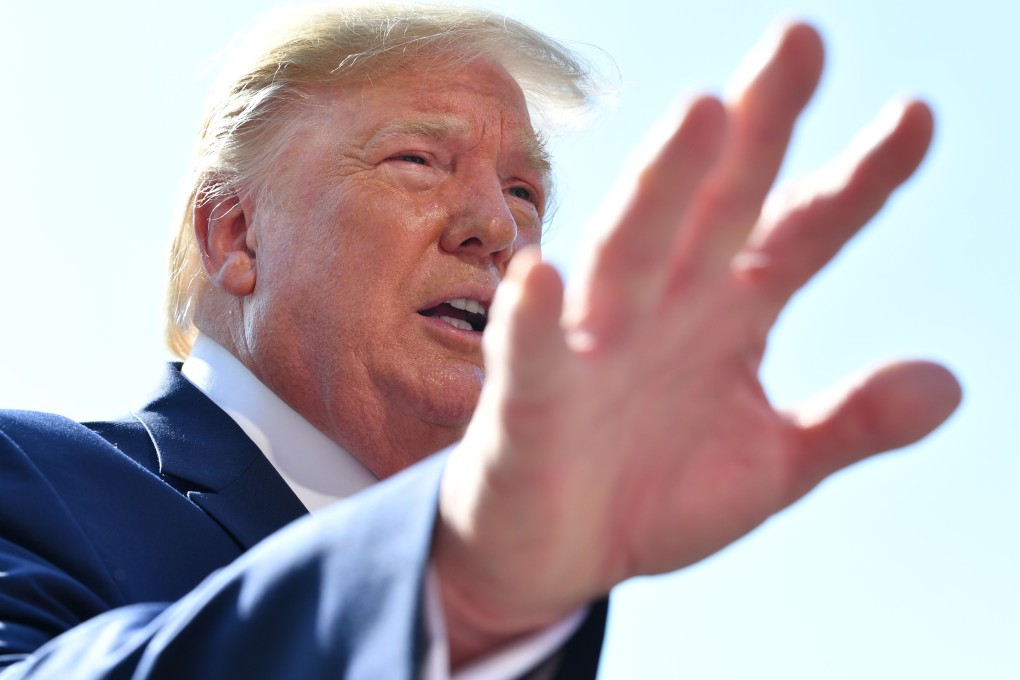Donald Trump says US ‘not ready’ to make a deal with China on trade, raising doubt about September talks
- In wide-ranging remarks, US president contends China has manipulated its currency
- Trump also reiterates that the US is ‘not going to do business with Huawei’

US President Donald Trump said on Friday that a trade deal with China was “not ready” to be struck – reiterating his charge that Beijing has been manipulating its currency – and injected doubt into the timeline for trade talks, which are expected to resume in September.
Saying that while the US was doing very well with China and that the two sides continue to talk, “we’re not ready to make a deal, but we’ll see what happens,” Trump told reporters on the south lawn on the White House.
Trump returned to the administration’s contention that the US had been victimised by China’s trade tactics and that it therefore had no choice but “to do what we’re doing”.
On August 1, Trump ordered a 10 per cent tariff be applied to an additional US$300 billion worth of Chinese imports starting September 1. “We have an open dialogue. We’ll see whether or not we keep our meeting in September ” he said. “If we do, that’s fine. If we don’t, that’s fine. But it’s time that somebody does what we are doing.”
In retaliation, China allowed its currency to weaken to levels not seen in 11 years, with its move above seven yuan per US dollar, a key psychological level. In response, the US Treasury made a swift decision, outside of its typical biannual report on currency relationships, and labelled China a manipulator.